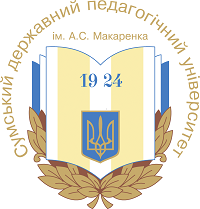ANTONYMY IN THE SPEECHES OF THE PRESIDENT OF UKRAINE
DOI:
https://doi.org/10.32782/philspu/2025.11.9Keywords:
antonymy, political discourse, President’s speeches, rhetoric, binary oppositions, linguistic analysis, national identityAbstract
The article analyzes antonymy as a key stylistic and rhetorical tool in the political discourse of the President of Ukraine during the war. Antonymic pairs in presidential speeches perform a number of functions: structuring the text, enhancing the emotional impact on the audience, emphasizing ideological values, increasing the persuasiveness of arguments, and mobilizing society. Based on the material of speeches for the period of October 1–30, 2024, the semantic classification of antonyms (graded, complementary, vector) is carried out and their functional load is determined. It was found that the most frequent pairs are war – peace, strength – weakness, justice – injustice, together – separately, we – they. The complementary opposition war – peace dominates the President's rhetoric, reflecting the desire for a just peace and opposition to aggression. The gradational antonyms strength – weakness emphasize the resilience of Ukrainians, while the vector antonyms (increase – decrease, approach – distance) reflect the dynamics of events and goals. Opposition us – them acts as an ideological marker of national unity and opposition of civilization models.Antonymy in the President's speeches reflects the basic values of Ukrainian society – freedom, justice, unity – and helps to strengthen national identity and mobilize the domestic audience. For the international community, antonymic constructions appeal to universal concepts, helping to support Ukraine in its fight against the aggressor. The active use of antonyms enhances the motivational potential of speeches, supports the patriotic spirit and forms a positive image of Ukraine as a country fighting for freedom, justice and peace.The obtained results confirm the high functional potential of antonymy in crisis political rhetoric through the formation of contrasting images, activation of moral categories, and strengthening the persuasiveness of arguments.
References
Селіванова О. О. Сучасна лінгвістика: термінологічна енциклопедія. Полтава: Довкілля-К, 2006. 716 с.
Тараненко К. В. Прагматичний потенціал антонімії української мови : монографія. Дніпро : УМСФ, 2017. 152 с.
Пономарів О. Д. Стилістика сучасної української мови: Підручник. 3-тє вид., перероб. і доповн. Тернопіль: Навчальна книга Богдан, 2000. 248 с.
Кравець Л. В. Архетипна основа сучасного політичного міфотворення. Науковий вісник Міжнародного гуманітарного університету. Серія: Філологія: Збірник наукових праць. Одеса: Вид. дім «Гельветика», 2019. Вип. 38. Том 3. С. 91–94.
Харитонова Д. Д. Український політичний дискурс: когнітивносемантичні та прагмакомунікативні виміри. Рукопис. Дисертація на здобуття наукового ступеня кандидата філологічних наук зі спеціальності “10.02.01 – українська мова”. Київський національний університет імені Тараса Шевченка. Київ, 2018. 212 с.
Промови Президента України (1–30 жовтня 2024). Офіційний сайт Президента України. URL: https://www.president.gov.ua/news/speeches (дата звернення 20 липня 2025).








